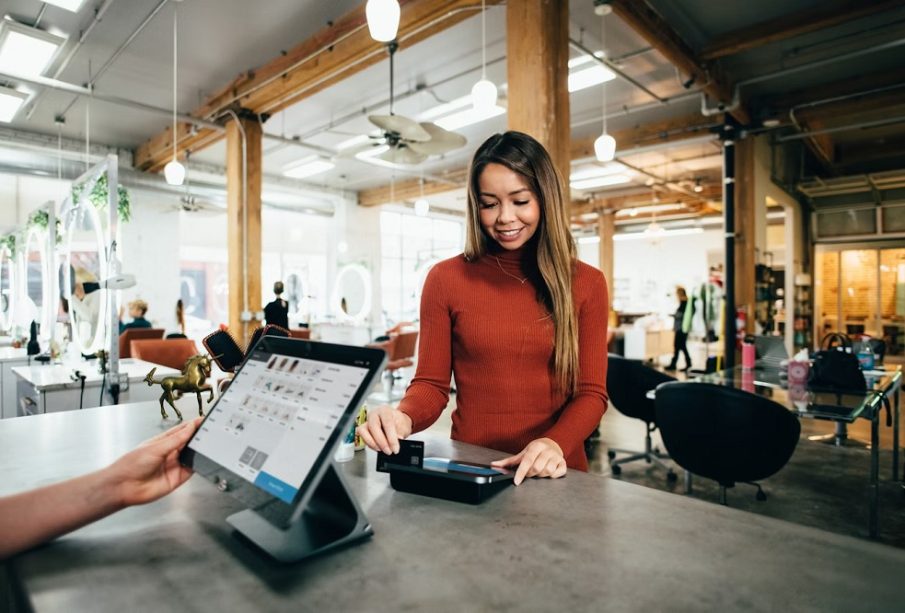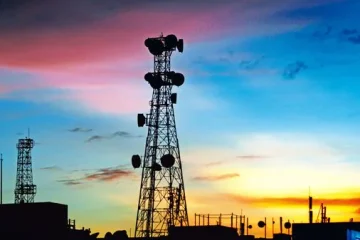The Future of Retail Innovation You Didn’t Know

The retail industry has always been in a constant state of evolution, driven by changing consumer preferences, technological advancements, and market demands. However, recent shifts in shopping behaviors, accelerated by global disruptions such as the pandemic, have prompted a profound transformation in how retailers approach innovation. The future of retail is set to redefine the way we shop, experience brands, and interact with products, all while blending the physical and digital worlds in increasingly seamless ways.
As retail becomes more dynamic and customer-centric, understanding the innovative trends shaping the industry’s future is essential. In this article, we will explore some of the groundbreaking innovations in retail that are already shaping the future and what businesses can expect in the coming years.
1. The Rise of Experiential Retail
Gone are the days when brick-and-mortar stores simply served as spaces for transactions. The future of retail is evolving towards experiential shopping, where the physical store becomes a destination that offers customers memorable and immersive experiences. Rather than merely showcasing products, stores are transforming into interactive environments that engage customers on a deeper emotional level.
Take, for example, the flagship stores of brands like Apple and Nike, which offer customers not only the ability to purchase products but also the chance to engage with technology, participate in workshops, or even test out products in innovative ways. In the future, more brands will embrace this approach, creating store layouts designed around customer experiences such as virtual try-ons, in-store events, and personalized product demos. By integrating technologies like augmented reality (AR) and virtual reality (VR), retailers will bridge the gap between the physical and digital shopping experience, allowing consumers to interact with products in ways that were previously impossible.
2. AI and Data-Driven Personalization
One of the most significant forces driving retail innovation is artificial intelligence (AI), particularly in the realm of personalization. Consumers are increasingly expecting personalized shopping experiences—whether online or in-store—and retailers are leveraging data analytics and AI tools to meet this demand.
Retailers will use AI to deliver hyper-targeted recommendations based on an individual’s browsing habits, purchase history, and even social media activity. In the future, your online shopping experience will feel tailor-made for you. Imagine entering an e-commerce site and immediately being shown products based on your personal preferences and past purchases, or walking into a store and being greeted by name with a personalized product recommendation on a digital display.
Additionally, machine learning algorithms will help retailers optimize pricing and inventory management, ensuring they offer the right products at the right time and price. This data-driven approach not only enhances the customer experience but also helps retailers streamline operations, reduce waste, and increase profitability.
3. Omnichannel Retailing: The Seamless Integration of Physical and Digital
Consumers today are not confined to a single shopping platform; they seamlessly move between online and offline channels, from browsing products on their smartphones to purchasing them in-store. In response to this shift, the future of retail is omnichannel, meaning that retailers must offer an integrated, seamless experience across all touchpoints.
The goal is to provide consumers with the flexibility to engage with a brand wherever and however they choose—whether it’s browsing a product in-store, ordering it online for delivery, or picking it up curbside. Retailers that can provide a smooth transition between these various channels will have a significant competitive advantage. This concept goes beyond just offering online purchasing options. For example, Buy Online, Pick Up In Store (BOPIS), and Click and Collect services are increasingly popular, allowing customers to shop online and then retrieve their items from a physical store.
In the future, retailers will take this experience further by incorporating more flexible payment options, real-time inventory tracking, and enhanced mobile apps that guide customers through both digital and physical channels with ease.
4. Sustainability and Ethical Retailing
As consumer awareness of environmental and ethical issues continues to grow, sustainability has become a major driver of innovation in the retail sector. From sustainable sourcing of materials to transparent supply chains, the future of retail will see an increasing focus on ethical business practices.
Retailers are already adopting eco-friendly packaging, reducing waste, and utilizing energy-efficient technologies in their stores. The next step will involve deeper integration of sustainability into every aspect of the business, from the materials used in products to the carbon footprint of the supply chain. Innovations like circular retail models, where products are designed to be reused or repurposed, will become more common. Brands will offer take-back schemes or resale platforms for used items, enabling a closed-loop system that reduces environmental impact.
The demand for ethical retailing will also encourage greater transparency, with retailers providing consumers access to information about where products are sourced, how they are produced, and their environmental impact. This transparency will empower consumers to make more informed purchasing decisions, and in turn, brands that prioritize sustainability will build stronger loyalty and trust among eco-conscious shoppers.
5. Voice Commerce and Conversational Shopping
As voice assistants like Amazon’s Alexa, Google Assistant, and Apple’s Siri become more embedded in daily life, voice commerce is set to revolutionize the retail landscape. Voice-driven shopping, or conversational commerce, will allow customers to search for products, place orders, and even make payments using just their voice.
Retailers are already experimenting with voice-activated shopping features, where consumers can order products through their voice assistant, add items to their shopping cart, and receive product recommendations based on past behaviors. In the future, these voice interactions will become even more sophisticated, allowing for more complex tasks like making product comparisons, receiving tailored suggestions, and tracking deliveries—all through voice commands.
Voice commerce offers retailers an entirely new sales channel, one that blends convenience with the growing use of smart devices in homes and on-the-go. For businesses, optimizing their platforms for voice search and ensuring a seamless voice-driven shopping experience will be crucial for staying ahead of the curve.
6. Robotics and Automation in Retail
The future of retail innovation also lies in the increased use of robotics and automation to streamline operations, reduce costs, and improve the customer experience. In stores, robots are already being used for tasks like inventory management, stocking shelves, and providing customer service. For instance, robots like Simbe Robotics’ Tally help with stock monitoring, scanning store shelves for out-of-stock items or misplaced products, allowing employees to focus on customer service.
Similarly, automated warehouses and fulfillment centers are increasingly being utilized by major retailers to speed up order processing, reduce human error, and improve efficiency. With innovations like drone delivery and autonomous vehicles, the future of retail logistics will be faster, more precise, and more sustainable.
7. Blockchain and the Future of Retail Payments
The use of blockchain technology in retail is still in its infancy, but its potential for transforming payment systems, loyalty programs, and supply chain management is immense. Blockchain’s decentralized and transparent nature makes it ideal for ensuring security and traceability in retail transactions.
Blockchain can enable quicker and more secure payments, eliminate fraud, and even allow consumers to track the entire journey of a product from creation to delivery. Retailers may also use blockchain to create cryptocurrency-based loyalty programs, where customers earn rewards that can be redeemed for products or services within the blockchain ecosystem.
8. The Future of In-Store Technology: Smart Mirrors and Virtual Fitting Rooms
Trying on clothes is one of the defining experiences of shopping in physical stores, but the future of this process is set to be revolutionized by smart mirrors and virtual fitting rooms. These technologies use augmented reality (AR) to allow customers to see how clothes will look on them without actually trying them on.
Retailers like Macy’s and Uniqlo are already experimenting with AR mirrors that can superimpose clothing onto a customer’s reflection, enabling them to try on various outfits virtually. This innovation saves time, enhances convenience, and can even help reduce the number of returns.
9. Subscription-Based Retail Models
Subscription services have been gaining traction in recent years, with companies like Stitch Fix and Amazon Prime offering curated experiences. Moving forward, retailers will increasingly adopt subscription-based models where customers receive regular deliveries of products, whether it’s clothing, groceries, or beauty products.
For retailers, subscriptions offer predictable revenue streams and the opportunity to build long-term customer relationships. For consumers, the appeal lies in the convenience and personalization these services offer. Brands will need to innovate their subscription offerings to provide even more tailored, value-driven experiences.
10. The Evolution of Smart Stores
The future of retail will see the widespread adoption of smart stores, where technology is seamlessly integrated into every aspect of the shopping experience. Imagine a store where shelves are automatically restocked, payments are processed without the need for checkout lines, and data is constantly collected to predict demand.
Companies like Amazon Go have pioneered the concept of cashier-less stores, where customers use their smartphones to check in, shop, and automatically pay for their purchases via sensors and cameras. This frictionless experience will become more common as retailers continue to leverage AI, IoT, and big data to create a more efficient and personalized shopping journey.
Conclusion
The future of retail innovation is incredibly exciting and promises a world where technology, convenience, and personalization are at the heart of every shopping experience. From experiential retail and AI-driven personalization to blockchain and smart stores, the landscape of retail is rapidly evolving, offering endless possibilities for both businesses and consumers. For retailers, staying ahead of these trends and embracing new technologies will be key to thriving in an increasingly competitive and dynamic market. By innovating in ways that blend the physical and digital, the future of retail is set to become more customer-centric, more sustainable, and more engaging than ever before.







